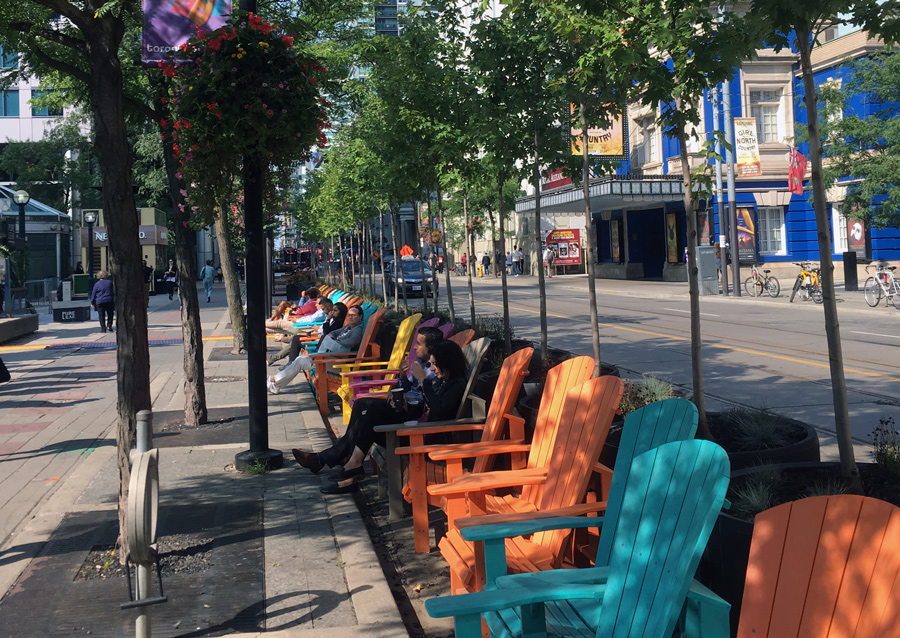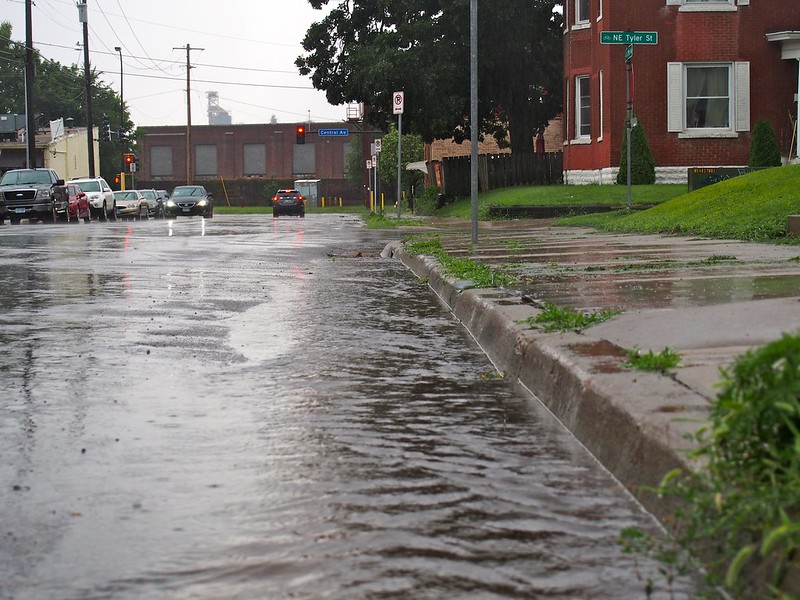Strategy 4 Green the streets.
The actions within this strategy are divided into two categories:
Action we will DOActions we will SUPPORTAction we will do are followed by “DO” and are colored in dark gray, and actions we will support are followed by “SUPPORT” and are colored in light gray.
Learn more about how we get thereGreen street elements bring life to the street, capture carbon from the air, reduce heat island effects and provide critical stormwater management function to reduce localized flooding and improve water quality. We will seize opportunities as we make improvements to streets to increase functional and aesthetic street treatments that contribute to climate benefits in the city. Functional elements treat and/or contain stormwater before entering the larger stormwater network. Aesthetic treatments include public realm improvements like plantings, boulevards and trees that help contribute to a sense of place.
Greening the streets helps to rectify the impacts of past street design and land use decisions that resulted in more impervious surface and less green cover in areas of the city that suffered racist redlining housing policy. Even today, neighborhoods in Minneapolis can face a 10 degree difference in heat depending on green coverage.1
- "Racist housing policies have created some oppressively hot neighborhoods", National Geographic
Actions to green the streets
Design 4.1
Build and maintain stormwater infrastructure into streets, using features such as vegetation and bioswales to reduce runoff and treat water prior to entering waterways.
Supported goals:
Climate Active Partnerships
Related actions:
Difficulty:
Medium
Timeframe:
2020-2023 (Years 0-3)
Status:
On-going
Design 4.2
Experiment with soil additives, such as biochar, fly ash, and iron fillings to retain pollutants, encourage vegetation growth and help street trees and plants survive in harsh winter conditions.
Supported goals:
Climate
Related actions:
Difficulty:
Medium
Timeframe:
2020-2023 (Years 0-3)
Status:
On-going
Design 4.3
Add greening elements to streetscapes to support the comfort and pleasure of people using the streets, as bikeway protection where appropriate, around transit stops and stations, and in high volume pedestrian areas.
Supported goals:
Climate Active Partnerships
Related actions:
Difficulty:
Medium
Timeframe:
2020-2023 (Years 0-3)
Status:
On-going
Design 4.4
Explore creating a program to proactively install street trees or other greening elements in underutilized parking spaces, either permanently and/or temporarily.
Supported goals:
Climate Equity
Related actions:
Difficulty:
Low
Timeframe:
2024-2027 (Years 4-7)
Design 4.5
Increase the tree canopy and urban forest coverage by 2040 by working with the Minneapolis Park and Recreation Board to preserve and enhance trees in the City’s right of way. Prioritize coverage where it least exists and in areas of concentrated poverty with majority people of color.
Supported goals:
Climate Equity Active Partnerships
Related actions:
Difficulty:
Medium
Timeframe:
2020-2023 (Years 0-3)
Status:
On-going

